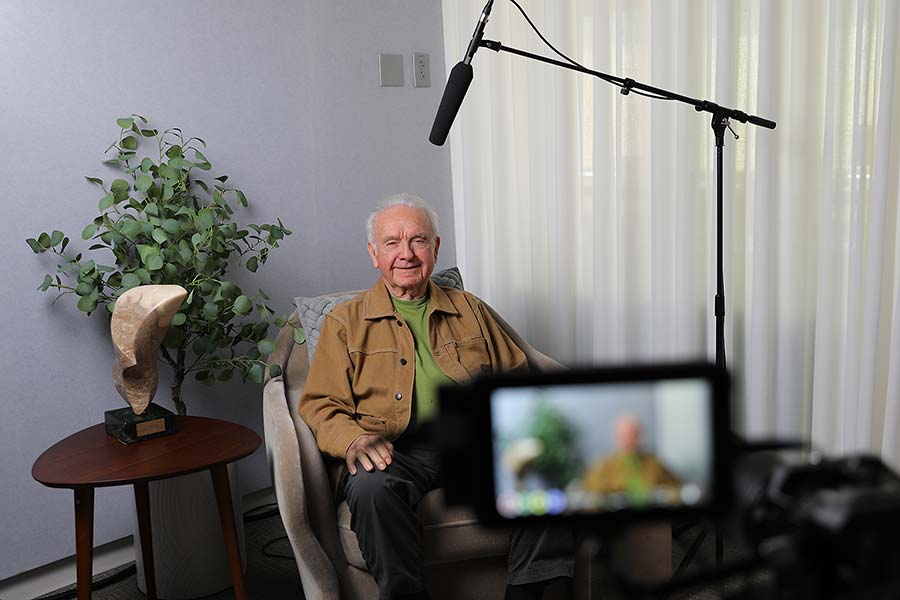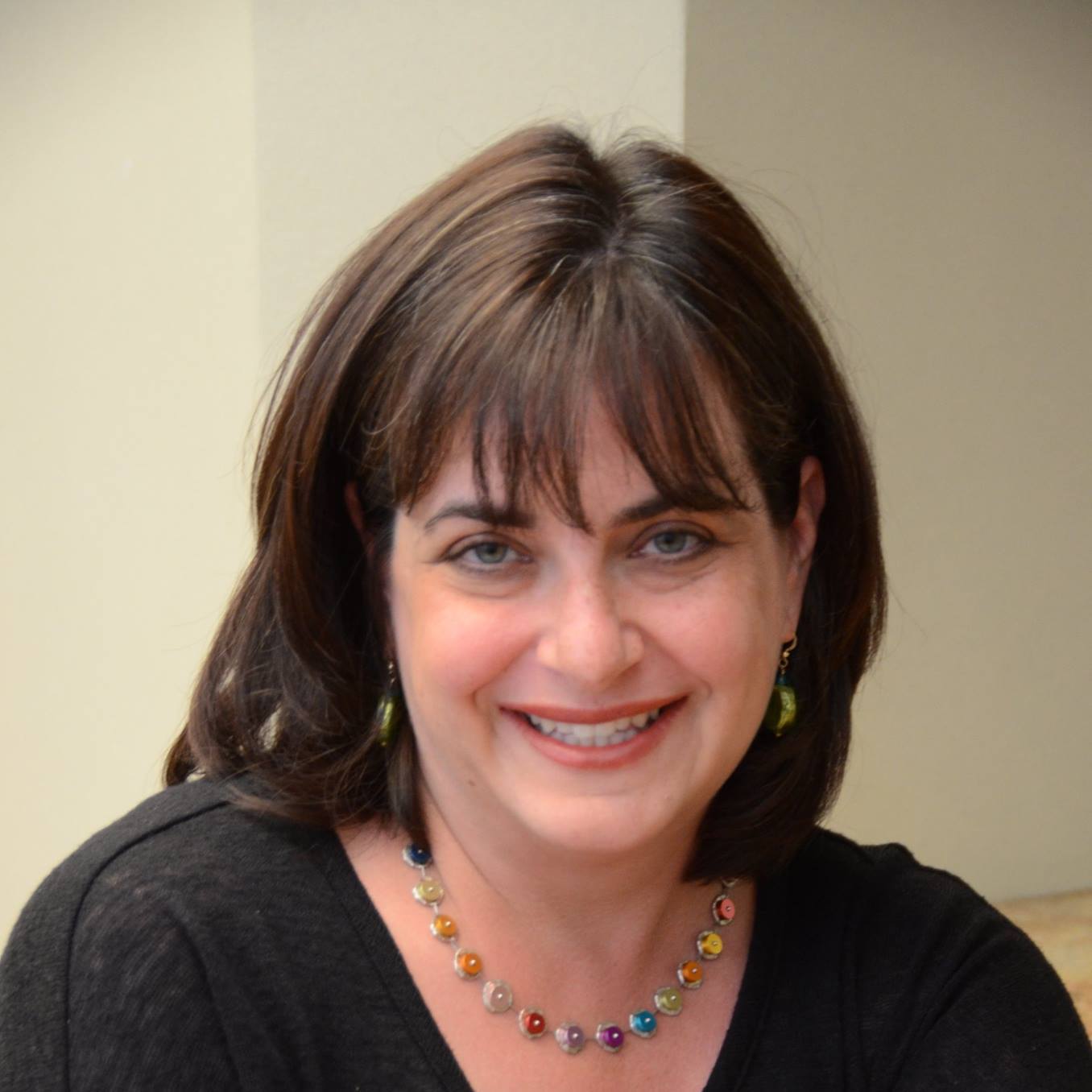USC Shoah Foundation Ramps Up Survivor Testimony Collection Efforts with New ‘Memory Studio’

Gerald Szames chokes up easily, especially when talking about his mother. So for years, his daughter has taken it upon herself to tell her father’s story of surviving the Holocaust as a small boy. She speaks to audiences at schools, houses of worship and community centers, often with her father by her side to answer questions.
Last month, Gerald, who is 85 and lives in San Diego, was able to tell his own story – raw emotions and all – as he sat for more than five hours in USC Shoah Foundation’s new Memory Studio to record his oral history for the Visual History Archive for the first time.
Gerald is among the first Holocaust survivors to record testimony in the new Ceci Chan and Lila Sorkin Memory Studio at the Institute’s international headquarters on the USC campus in Los Angeles. The facility is the Institute’s first in-house studio in its 29-year history.
“It was very special to actually have my father agree to be interviewed, and to go to USC Shoah Foundation,” said Deborah Walsh, one of Gerald’s three daughters, who accompanied her father to The Memory Studio. “This was really the first time he has told his full story, in his words, which is really important.”
USC Shoah Foundation plans to interview several survivors a week at the studio, a key part of the expansion and acceleration of the Last Chance Testimony Initiative, an urgent effort launched in 2019 to encourage Holocaust survivors—most of whom are now in their 80’s and 90’s—to give testimony while time and memory permit. Although there is no official census data, researchers at the Claims Conference estimate there are fewer than 50,000 remaining Holocaust survivors living in the United States.
Dr. Robert Williams, Finci-Viterbi Executive Director of USC Shoah Foundation, said the Last Chance Testimony Initiative is rooted in the belief that as long as there are still witnesses ready to speak, their voices must be heard.
“Every Holocaust survivor who shares his or her experience adds to our knowledge and provides an enduring legacy of memory,” Williams said. “With antisemitism once again on the rise around the world, it is our duty to collect and listen to the testimonies of those who experienced the worst consequences of unchecked bigotry against Jews.”
The Memory Studio, discreetly outfitted with state-of-the-art recording equipment, is designed to make survivors feel at home as they share intimate and difficult memories. Survivors are invited to sit in a comfortable armchair beside a plant and a luminous granite sculpture by Holocaust survivor George Weiss, who himself volunteered at USC Shoah Foundation for many years.
Recording interviews in The Memory Studio allows USC Shoah Foundation to streamline and accelerate the process of collecting testimonies.
"I believe that continuing to record Holocaust survivors’ testimonies and to hear the crystalline voices is so vitally important, because it enables people of all persuasions and backgrounds to learn from these horrific acts,” said Ceci Chan, a member of USC Shoah Foundation’s Board of Councilors Executive Committee, and the naming supporter of The Memory Studio.
“The Memory Studio gives survivors the resources to report and to reflect – they can talk about their experiences of survival and see the impact that USC Shoah Foundation is delivering globally.”
Survivors and the family members who accompany them to The Memory Studio will have an opportunity to visit interactive displays at USC Shoah Foundation and to meet the Institute staff entrusted with preserving the testimonies.
USC Shoah Foundation is also seeking descendants of survivors and Holocaust scholars to volunteer as interviewers to guide survivors through the testimony collection process.
USC Shoah Foundation first began collecting testimonies in 1994, when founder Steven Spielberg, inspired by his work on Schindler’s List, recognized the importance of giving voice to Holocaust survivors and using their testimony to educate present and future generations.
More than 52,000 Holocaust survivor oral histories are now saved and shared through the Institute’s Visual History Archive—currently available to users at 185 access points in 15 countries—and form the basis of educational activities that reach some 10 million learners annually. Some 5,000 testimonies are available online.
In 2007, USC Shoah Foundation began collecting testimonies related to other mass atrocities including the Armenian Genocide, the 1994 Genocide Against the Tutsi in Rwanda, and the War and Genocide in Bosnia and Herzegovina. The total archive now contains more than 56,000 testimonies.
The Last Chance Testimony Initiative is being spearheaded by Ryan Fenton-Strauss, USC Foundation’s interim Director of Media and Archives, who said the new testimonies will offer fresh perspectives on the current upsurge of antisemitism around the world.
“Many of the survivors we are interviewing now were children or teens when the war began. And many of them have remarkably vivid memories,” Fenton-Strauss said. “We are so appreciative of their willingness to revisit these memories, and to offer their unique perspectives on the trends we see in our world right now.”
Gerald Szames and his family are glad to have had the opportunity for him to tell his own story. He was the second youngest of ten family members who spent two-and-half years evading the Nazis by moving from trench to trench in the forest near his hometown of Trochenbrod, in what is now Ukraine. Gerald's father, grandparents, and many aunts, uncles and cousins were killed during the Holocaust; but all the family members who escaped into the woods survived.
“Right now, of the ten of us, only two are alive, and I’m really not sure how many people from Trochenbrod survived at all,” he said. “I am glad that I had the chance to share my little piece of history.”
To request to be interviewed for the Last Chance Testimony Collection, or to apply to be an interviewer, please visit our Last Chance Testimony Initiative page.
